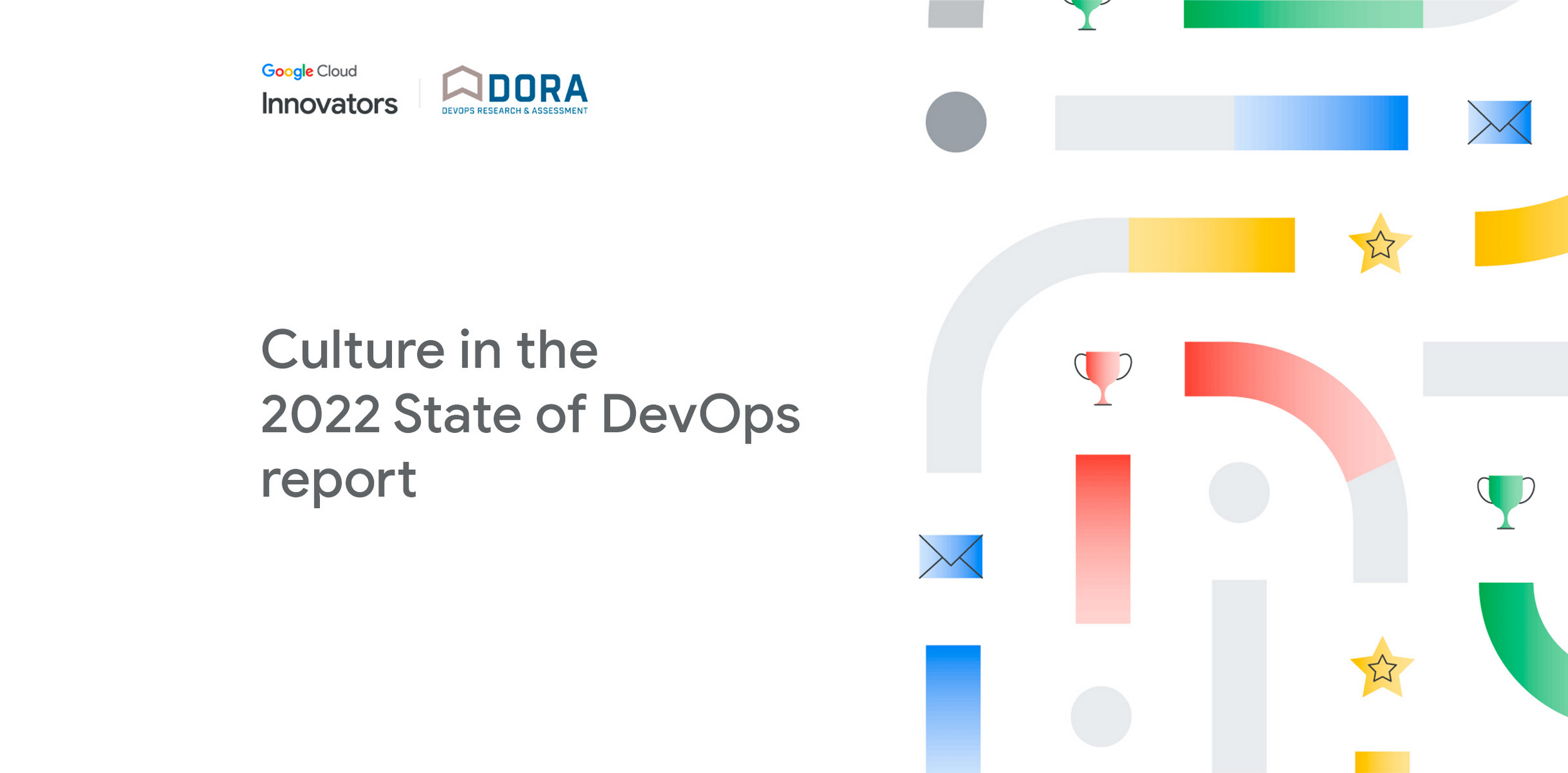Cultural drivers of DevOps success

Daniella Villalba
User Experience Researcher
Try Google Cloud
Start building on Google Cloud with $300 in free credits and 20+ always free products.
Free trialWhile there are as many ways of defining DevOps as there are people, most would agree that at the most basic level, DevOps is about tools, practices, and how people work together to deliver software quickly, reliably, and safely. A big part of how people work together has to do with their organization's culture.
Research conducted by the DORA team over the past eight years has consistently shown that culture is foundational to an organization’s success and the well-being of its employees. Our data has shown that high performing organizations, those that meet their performance and profitability goals, are more likely to have a generative culture - the 2022 State of DevOps report’s findings continue to support this claim.
This year, we examined three main areas related to the impact of culture on DevOps:
If the shift in work arrangements that has occurred since the start of the Covid-19 pandemic has had an impact on organizational performance.
Whether higher team churn impacts organizational performance.
The impact of employee burnout.
Work arrangement shifts
Flexible work arrangements have now become the norm at many organizations. Employees across many industries have the opportunity to choose between in-person, hybrid or fully-remote work arrangements that best fit their unique needs. Our research indicates that this shift has been a good one. Specifically, we find that flexible work arrangements are associated with higher organizational performance compared to organizations with more rigid work arrangements. This is good news! These findings demonstrate that being employee centric can have tangible and direct benefits to organizations.
Employee churn
Constant churn can impact productivity and morale as new team members need time to onboard. And those who stay might need to adapt to changes in their workload and team dynamics. We found that stable teams — teams whose composition hadn’t changed much over the last 12 months, were more likely to exist within high-performing organizations. Our research also showed that stable teams were more likely to report producing quality documentation compared to teams that experienced more churn. A team that is constantly dealing with change may have a harder time keeping up with practices that lead to quality documentation.
Employee burnout
Lastly, we focused again on burnout - the feeling of dread, apathy, and cynicism surrounding work. Experiencing burnout can lead people to have lower levels of job satisfaction and increases in turnover - not to mention the increased risk of poor mental and physical health outcomes such as increased risk for depression and anxiety, heart disease, and suicidal thoughts1. Our findings from this year showed that rigid work arrangements increase the likelihood of employee burnout by 30%.
Taken together, these three findings underscore the importance of creating a healthy and inclusive culture for employees both at the organizational and team level.
While we continue to emphasize the importance of culture, we acknowledge that changing or even improving an organization’s culture is no easy task. We recommend that organizations seek to first understand their employees' experiences and subsequently invest resources in addressing culture-related issues as part of DevOps transformation efforts.
To learn more about how culture impacts organizational performance check out the 2022 State of DevOps Report. And if you have a story about how you are implementing DORA devops practices, don’t forget to share your transformation journey by applying to the 2022 DevOps Awards by January 31, 2023!
Maslach C, Leiter MP. Understanding the burnout experience: recent research and its implications for psychiatry. World Psychiatry. 2016 Jun;15(2):103-11. doi: 10.1002/wps.20311. PMID: 27265691; PMCID: PMC4911781.



